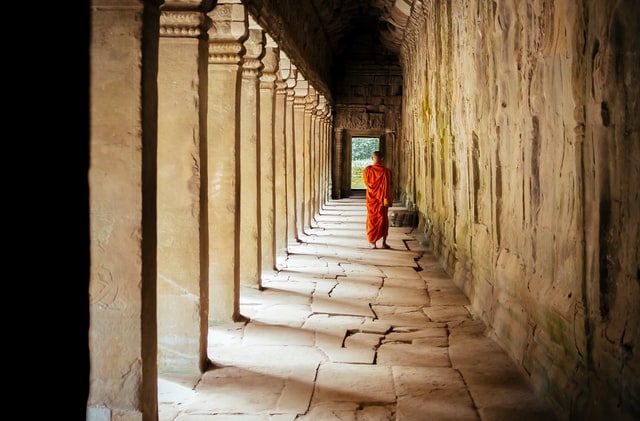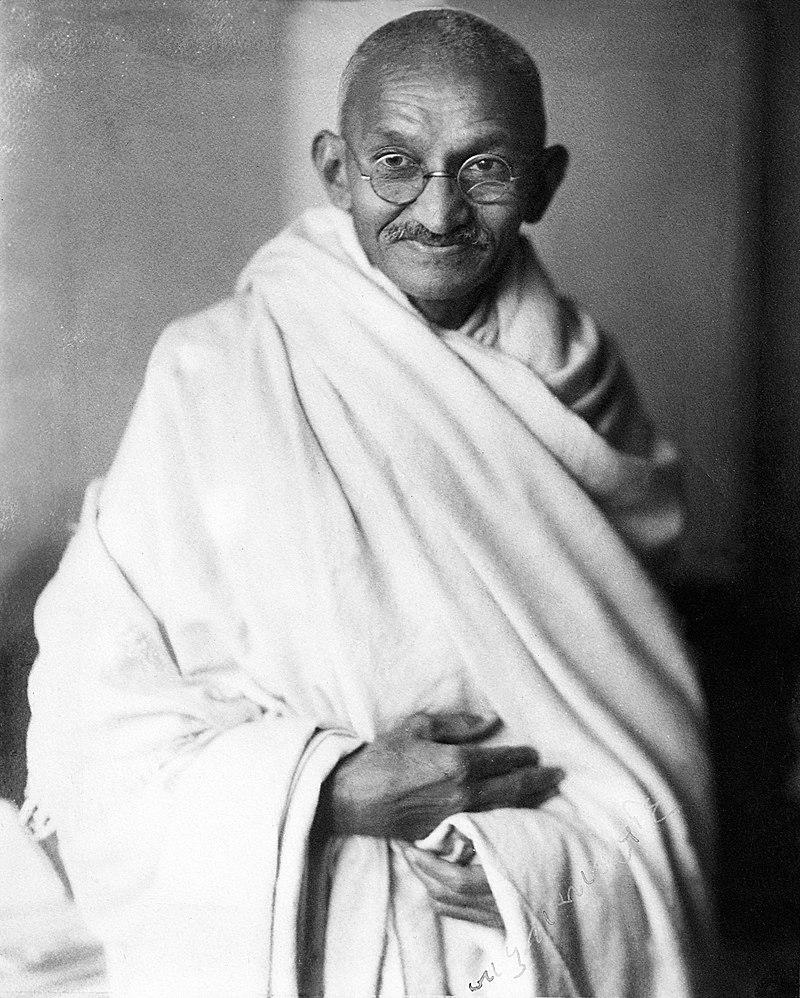
Ahimsa is one of the key principles of most of the major Eastern religions such as Buddhism, Jainism, and Hinduism. Unlike other terms such as nirvana, samsara, and karma, however, ahimsa is less talked about in the West even though it’s at the core of all these religions, especially Jainism. So, what exactly is ahimsa and why is it so important?
What Is Ahimsa?

The term ahimsa or ahinsa comes from Sanskrit where it literally translates as “noninjury”. Hims there means “to strike”, himsa – “injury”, and the pre-fix a–, as in many Western languages, means the opposite, hence – noninjury.
And this is exactly what the term means in the ethical teachings of Jainism, Buddhism, and Hinduism – the idea that a religious and ethical person who seeks to maintain good karma and stay on the road to Enlightenment must practice ahimsa toward all people and other living beings.
The different interpretations of what constitutes a “living being”, however, are what leads to some variation in how people practice ahimsa.
Small Vows vs. Great Vows
There are two main ways people look at ahimsa – as anuvrata (Small vows) and mahavrata (Great vows).
This distinction between the small and great vows can be seen pretty clearly between the three Eastern religions as Jainism is largely focused on the mahavrata great vows while Buddhists and Hindus tend to focus mostly on the anuvata small vows.
What Is Anuvrata?
Even if this is your first time hearing about the ahimsa vows, their basic meaning is quite intuitive – the anuvrata small vows state that practicing nonviolence is important only when it comes to people and animals. These small vows alone are enough to make sure that all Buddhist and Hindus who take the anuvrata vows become vegans and work to never act in violence against animals.
What Is Mahavrata?

On the other hand, the mahavrata great vows dictate that one should be especially devoted to not committing any harm to any living soul (jiva), be it a human, an animal, or “smaller” life forms, including insects, plants, and even microbes.
Naturally, from a scientific point of view, we know that not “harming” microbes is impossible but modern Jains who take the mahavrata vows rationalize them by focusing on unnecessary harm, i.e., harm that can be avoided and isn’t needed for the continuation of one’s life. The same idea is applied to plant life as even Jains have to eat to survive.
Additionally, the mahavrata vows include additional principles of maintaining an ethical and ascetic life:
- Nonviolence – Ahimsa
- Truth – Satya
- Refraining from stealing – Achaurya or Asteya
- Celibacy or Chastity – Brahmacharya
- Lack of attachments and personal possessions – Aparigraha
Mahavrata also extends the principle of nonviolence to thoughts of and desires for violence.
Staying on the ahimsa part of the vows, both the small and great vows focus on nonviolence (albeit differently interpreted) as harming another soul is said to negatively affect our karma. As keeping one’s karma pure is a key part of breaking the samsara cycle of suffering and reaching Enlightenment, devout Jains, Buddhists, and Hindus take the ahimsa principle very seriously.
Ahimsa In Yoga
Even if you don’t follow any of these three Far-Eastern religions, ahimsa is also a part of many yoga systems that are practiced in the West. Patañjali yoga, for example, cites ahimsa as the eighth limb of its system. The nonviolence principle is also one of the ten main Yamas or limbs of Hatha yoga.
In these and in many other yoga schools, practicing ahimsa is key to establishing a good foundation for the mind, soul, and the self. The self-restraint gained by ahimsa is also often cited as key for any practitioner who wants to advance further into yoga.
Ahimsa and Mahatma Gandhi

Another major way the principle of ahimsa extends beyond religious practices is through famous and influential public figures, such as the reformer Shrimad Rajchandra, the author Swami Vivekananda, and, most famously, the early 20th-century lawyer, political activist and ethicist, and anti-colonial nationalist Mohandas Karamchand Gandhi, also known as Mahatma Gandhi.
Gandhi was of the belief that ahimsa is important not only in its physical sense but in its psychological and emotional sense too – that evil thoughts and hatred toward others, lies, harsh words, and dishonesty all contradict ahimsa and bring negative karma to the self. He viewed ahimsa as a creative energy force that should be allowed through us to help us reach Satya or “Divine Truth”.
Gandhi also famously stated that… “Ahimsa is in Hinduism, it is in Christianity as well as in Islam. Nonviolence is common to all religions, but it has found the highest expression and application in Hinduism (I do not regard Jainism or Buddhism as separate from Hinduism)”.
For the Quran, in particular, he said, “I have heard it from many Muslim friends that the Koran teaches the use of non-violence… (The) argument about non-violence in the Holy Koran is an interpolation, not necessary for my thesis”.
In Conclusion
It is probably somewhat ironic, as well as telling, how most people tend to focus on the personal aspects of Eastern religions and philosophies such as karma, samsara, nirvana, Enlightenment, and others, but ignore the element that has to do with those around us – the nonviolence principle of ahimsa.
Indeed, we all want to break free from the cycle of suffering, improve our karma, and reach nirvana and Enlightenment, but most of us ignore the crucial step of being nice to everyone else and not just ourselves. And that is where ahimsa comes in.








